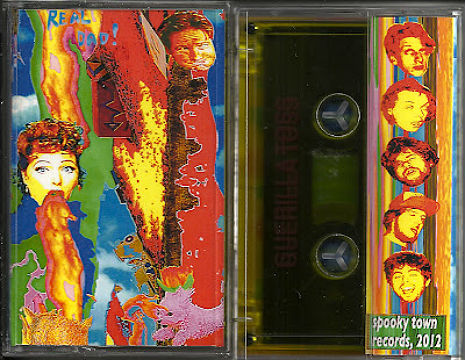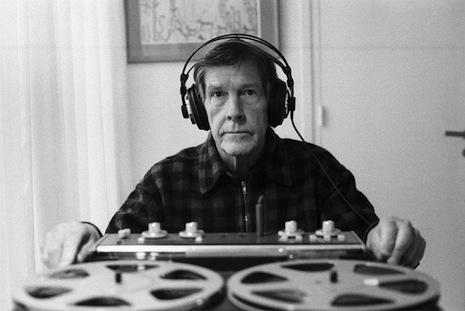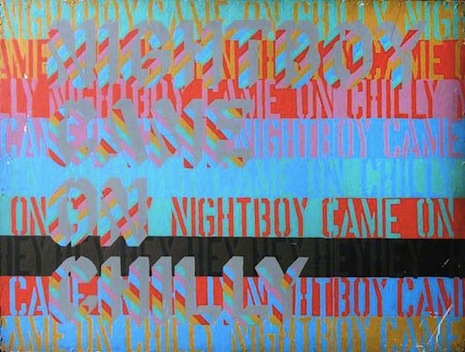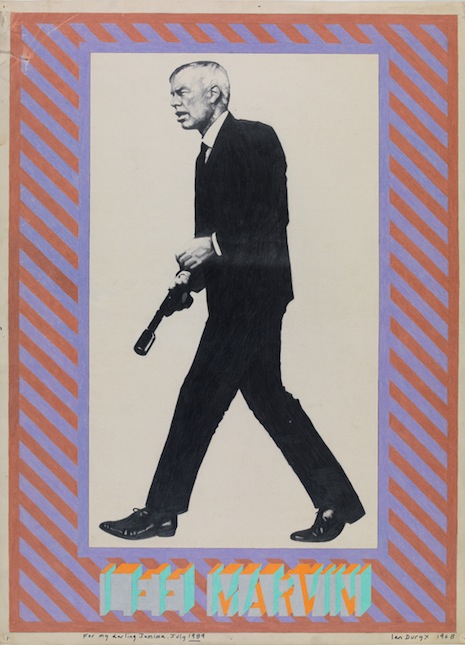
As longtime DM readers are by now probably pretty well-aware, I’m a huge Tim and Eric fan. I’ve seen ‘em live, I bought all the DVDs (even the early material sold on their website) and apparently I’m one of the few people who thought Tim and Eric’s Billion Dollar Movie was piss-yourself funny (Everyone knows that you can’t trust the tastes of the general public, even if Netflix stars do tend to mostly be correct, but I digress…)
When the publicist for Some Things Never Stay The Same , the sophomore effort from Tim Heidecker and Davin Wood, contacted me about the album, I said “Yes, please” and then I thought “Hey, wait a minute, Tim Heidecker has a serious band??” Like most of you, for me, the idea of a comic doing music brings to mind not necessarily the great “Weird Al” Yankovic, or even Steve Martin, but Eddie Murphy’s hack 80s shit like “My Girl Wants to Party All the Time.”
, the sophomore effort from Tim Heidecker and Davin Wood, contacted me about the album, I said “Yes, please” and then I thought “Hey, wait a minute, Tim Heidecker has a serious band??” Like most of you, for me, the idea of a comic doing music brings to mind not necessarily the great “Weird Al” Yankovic, or even Steve Martin, but Eddie Murphy’s hack 80s shit like “My Girl Wants to Party All the Time.”
My fears were completely unfounded. Some Things Never Stay The Same is a really, really good album. It completely won me over. The songs are as catchy as anything heard on 70s AM radio. Hear them one time and you’ll be humming them to yourself soon afterwards. With the assistance of guests like Aimee Mann, Eric Johnson (The Shins, Fruit Bats) and others, Heidecker & Wood have, um, “seriously” managed to put together one of the most fun albums of 2013. I said “fun” not “funny.” There’s a difference, but I’ll let Tim explain exactly what they’re up to.
is a really, really good album. It completely won me over. The songs are as catchy as anything heard on 70s AM radio. Hear them one time and you’ll be humming them to yourself soon afterwards. With the assistance of guests like Aimee Mann, Eric Johnson (The Shins, Fruit Bats) and others, Heidecker & Wood have, um, “seriously” managed to put together one of the most fun albums of 2013. I said “fun” not “funny.” There’s a difference, but I’ll let Tim explain exactly what they’re up to.
Richard Metzger: In the press materials, it says that you and Davin Wood wanted to record an homage to 70s singer/songwriters like Warren Zevon and Harry Nilsson. “Cocaine,” the lead-off track refers to just the sort of creative fuel rock stars liked to ingest back then. Did you guys snort up a massive amount of blow before you wrote that song? I ask because I can’t imagine that you were inspired to write that by eating a lot of pancakes, because otherwise you’d have just written a paean to flapjacks. Am I off base here?
Tim Heidecker: You are off base. Really off base. It’s disappointing that this is your first question. a dreaded JOKE question. I really admire this blog and visit it daily, so it was really dispiriting to to find the first question so corny and LOUSY! My gosh what a way to get things started….. Boy.
Anyway, I’ve never done cocaine in my life - for real. Never had the interest and frankly the anti-cocaine propaganda surrounding me in the ‘80s really frightened me into staying away from it. the song idea popped into my head as songs normally do—out of thin air—the words and melody fitting together nicely… me playing around with the chords from “Werewolves of London” playing them backwards… Then I thought it’d be funny to write a really positive song about cocaine—no down side—almost from the perspective of someone in their honeymoon period with the drug before the dark side of it shows up. Even the bridge, which is usually a good place to go “but there’s another side to this story,” keeps things positive.
RM: Hey, calm down, that was a totally legit question. I think you’re just being overly sensitive about being a comic making “serious” music, Tim. Just go with it. You’re among friends here. I’d imagine that a lot of our readers probably, you know, love cocaine.
But speaking of serious music, how did you rope in Aimee Mann for the project? I respect her so much as a musician that I actually buy her CDs, I don’t even download ‘em. Really.
Tim Heidecker: Fine! I’m COOL! Let’s try and steer this thing back on track… Aimee and I go way back. Not really. Is six years way back? I became friends with her through my wife, which was nice. She didn’t start out as a “SHOW BIZ FRIEND”—just a nice person that my wife would go feed squirrels with. She didn’t know my work, and frankly I think a lot of it grosses her out! I don’t blame her! But we’re good buds and we’re always looking for stuff to do together. I had the idea for her to sing on a few songs and called her up—she was over in my garage that afternoon and there you go.
RM: I remember when she was on Awesome Show! Is Aimee Mann herself a “serious” musician who wants to be funny?
Tim Heidecker: I find a lot of musicians gravitate towards comedy and vice versa—I think it has more to do with the stuff in our brains that made us get into “show business” than how we neatly fit into our categories we’ve lined up into. I’ve been thinking about this a lot actually as I understand it can be confusing or “bad business” to jump in and out of comedy/music/drama/ballet or whatever it may be, but I bet a lot of people didn’t start out knowing exactly where they’d fit and just went with the first thing that really clicked and paid the bills. Hence, Russell Crowe’s band and all the rest.
RM: Davin Wood and you did most of the music for Awesome Show! together, right?
Tim Heidecker: Yes sir that’s right. Eric of course also throws in his ideas and little jingle ideas as well—I made a lot of the music for “Casey and His Brother” and David Liebe Hart’s songs—a lot of the low fi/super crappy stuff as I taught myself home recording… One I’m proud of is a little song called “Live with my Dad”—the MIDI horns are just… yuck.
All the GOOD sounding stuff came from either us singing Davin a little melody or sending him a little demo and giving him a genre to work in or giving him the idea and letting him build the song—revisions and notes, etc… It’s weird—he lives in Echo Park but we’re on different schedules so almost all our work on the show was done over email and phone calls.
RM: It’s quite a leap from the Casiotone, vocoder and keytar sound of the Tim and Eric soundtrack to the “analog” Laurel Canyon sound on the album. You do a great Bob Dylan, a pretty good Warren Zevon, there’s that ditty boosting Scientology in the style of The Kinks that you did and there’s the music from the show which is all over the place… You’re like the Rich Little of alt comedy and it seems like you could probably mimic practically any musical style you wanted to, so at what point did you and Davin think, “Hey, let’s do this...” and commit to the Canyon sound?
Tim Heidecker: No one wants to be the Rich Little of ANYTHING, but thank you nonetheless. I think we want the songs to work together as albums and it’s stronger to keep the style somewhat consistent. That said, I think we kind of branched out into a few different styles on this record: “Sunday Man” and “On Your Own” are kind of Pink Floyd-style space rockers.
RM: I really like “Getaway Man.” The lyrics to that one are straight up Randy Newman, who I love. It’s wonderfully silly, but well-played, and so affectionate, I must say. You do Randy Newman as well as he does. What inspired that story? A bank robbery? A clingy girlfriend? Both?
Tim Heidecker: Oh man, I don’t remember. Maybe having just seen Drive? I adore Randy Newman and got a bit obsessed a few years ago. If you’re reading this and saying “Whaaaa?” I suggest you go back and check out Sail Away and Good Old Boys two records that I could listen to every day of the week. Anyways, I think the song gets a little silly in the second verse and was pretty happy with the line “Evening Sun,” which sounds like something but really isn’t! I like when that happens—fun word play that sounds right in the song but upon further investigation is nonsense. The song gets a lot of Springsteen comparisons, too, and thats because we did the trick of playing a high piano note coupled with the glockenspiel. It’s a recipe for insta-Boss.
RM: I like the soulful horns on that one, too. Production value! Sounds expensive.
Tim Heidecker: Yea! We brought in real live human beings to play on this record! Davin really is the master of dialing in the MIDI to sound really great but we had new some players who were game so we had them over to my garage and built those parts.
RM: Okay, last question: What’s the next musical genre you two will take on with the next Heidecker & Wood project?
Tim Heidecker: Who knows? I have piles of songs in various stages of completion. Some country flavored (but I think Ween already cornered that idea). Probably more of the same. Hopefully we get better. I think a priority would be to do the next record a little more “live in the studio” with some really good players - I was listening to the reissue of Moondance and it was striking to hear that although the songs are all different there’s a consistent arrangement to each of them—it’s really just some guys in a room playing these songs. I think that’d be fun to do.
Some Things Never Stay The Same is out now via Little Record Company. Below, a high-spirited performance of “Cocaine” at Largo in Los Angeles on April 27, 2011.
is out now via Little Record Company. Below, a high-spirited performance of “Cocaine” at Largo in Los Angeles on April 27, 2011.


















